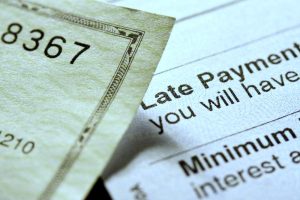 The overall delinquency rate, as tracked by the research team at CoreLogic, hit the lowest rate in a full year. Data from April showed 4.7% of all mortgages in the country in some state of arrear—the measurement includes any payment later than 30 days as well as all foreclosure cases. Compared to April 2020, this represents a 1.4 percentage point year-over-year decrease.
The overall delinquency rate, as tracked by the research team at CoreLogic, hit the lowest rate in a full year. Data from April showed 4.7% of all mortgages in the country in some state of arrear—the measurement includes any payment later than 30 days as well as all foreclosure cases. Compared to April 2020, this represents a 1.4 percentage point year-over-year decrease.
CoreLogic's researchers credit recovery on the jobs and income front with enabling more homeowners to resolve their unsettle-payment status. The authors of the report include mention of government agencies' efforts to provide homeowners various opportunities to recover and keep their homes. Due almost fully to to these actions, the foreclosure rate in America remains extremely low at just .3%.
"The sharp rebound in the economy, as well as a potent combination of government fiscal and regulatory help, is fueling unprecedented demand for residential housing and enabling people to buy and stay in their homes," said Frank Martell, President and CEO of CoreLogic. "The drop in delinquency rates is a further manifestation of the benefits of these tail winds."

"Natural hazard events and job loss in the oil and gas industry during the past year continue to affect local delinquency rates, despite a general decline in delinquency rates in many urban areas,” said Dr. Frank Nothaft, chief economist at CoreLogic. "Of all metros, Odessa, and Midland, Texas, had the largest one-year jumps in serious delinquency rates, followed by Lake Charles, Louisiana, which was hit hard by Hurricanes Laura and Delta in 2020."
Nothaft recently gave a talk in which he explained how hurricanes and disasters affect the delinquency rate, using Lake Charles as an example and employing data from CoreLogic's 2021 Hurricane Report.

Broken down by stage, 1% of loans are in early delinquency compared to 4.2% in April 2020. Adverse-stage delinquencies are down to .3% from .7% a year ago. And 3.3% of borrowers are seriously delinquent. This share is up since April 2020 when it was at 1.2%. Just .6% of borrowers transitioned from current to early delinquency, which is down from 3.4% the previous April.
Fewer borrowers hitting that 30-day past due mark is cause for optimism among experts.
"Barring an unforeseen change, we expect rates to continue to fall and home prices rise over the next 12-to-18 months," Nothaft said.
The full CoreLogic Loan Performance Insights report is available at CoreLogic.com.

 DSNews The homepage of the servicing industry
DSNews The homepage of the servicing industry









